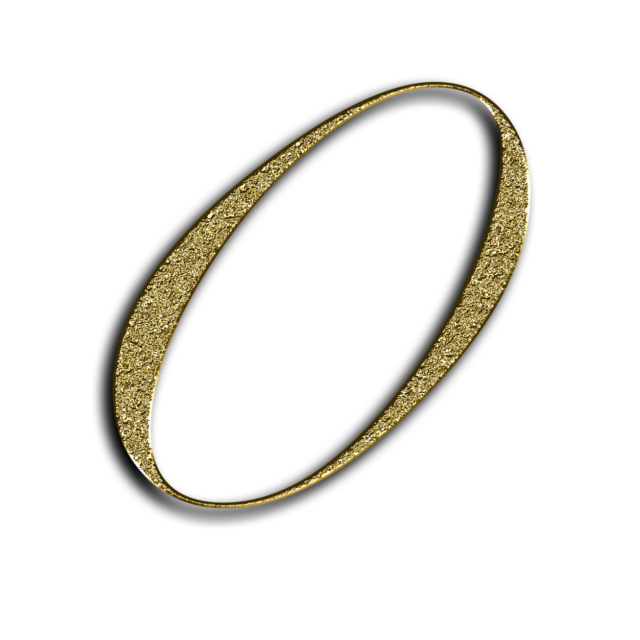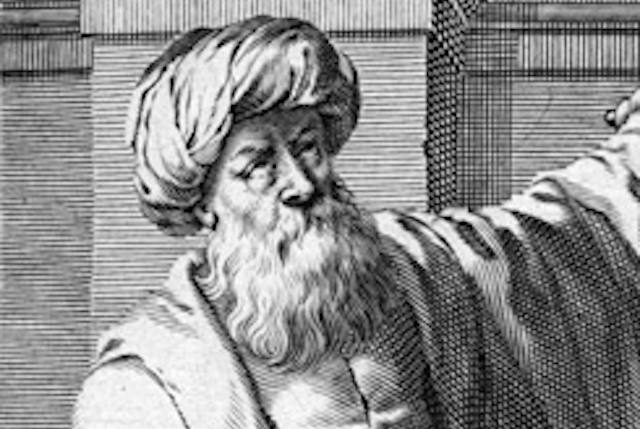Whenever we think of pioneering achievements in mathematics, we think of early modern works by mathematicians like Einstein, Newton or Galileo. None of them, however, would have been possible without the groundwork laid by ancient mathematicians.
Some of the greatest ancient mathematical works come from early civilizations like Greece, India and Egypt, providing a base for mathematicians and scientists to build on for centuries to come.
8. Euclidean Geometry

Euclidean geometry is named after Euclid – a Greek mathematician who lived in Alexandria, Egypt around the 3rd century BC. Almost all of us can recognize its immense influence on mathematics, as Euclidean geometry is the geometry taught in primary and secondary schools around the world.
Euclid’s influence on mathematics, however, goes beyond basic geometrical concepts. At that time, he was one of the earliest thinkers to employ what we now know as the scientific method. His technique involved studying different problems to come up with specified, tailored solutions, instead of the then-widely-accepted method of just memorizing a theorem and applying it to everything.
Euclid’s emphasis on proof and rigorous experimentation over established methods had a huge influence on mathematics. Euclid’s treatise on early geometry – Elements – was so influential that until the advent of non-Euclidean geometry in the 19th century, ‘geometry’ was synonymous with Euclidean geometry.
7. Zero

The number system has been around for a while, going as far back as at least ancient Egypt. However, for the longest time, that didn’t include the concept of zero. For centuries, perhaps even millenia, the concept of nothing was entirely missing from math and geometry, creating obvious problems for everyday calculations.
Ancient Babylonia was the first civilization to introduce a working concept of 0 around 300 BC, though it was only used for numbers with a 0 between them – never in the beginning or the end. While it was a great way to distinguish, say, 68 from 608, the concept was never developed for other, more complex type of calculations. The Mayans also dabbled with the idea around six centuries after that, though only for dates and days in their rather elaborate and complex calendar systems.
The first civilization to really master the concept of zero as we know it today was ancient India. While many prominent Indian mathematicians contributed to the idea over the centuries, Brahmagupta was the first one to properly define its usage and operation in the year 628.
6. Heliocentricity

While we now know that the Sun – and not Earth – is at the center of the solar system, for ancient mathematicians, it was a rather giant leap to make. You can see that the Sun – along with all the other objects in the sky – goes around the planet everyday. Even for the most accomplished thinker during, say, the Bronze age, it seemed obvious that our world is at the center of everything, not even just the solar system.
Aristarchus of Samos – a Greek thinker born in 310 BC – was the first mathematician to figure it out. He studied the motion of the Moon, Sun and the other planets in the night sky to correctly postulate that the Sun is at the center of the solar system, and all the planets – including Earth – revolve around it.
Unfortunately, his ideas were a bit too ahead for their time. For the mathematicians back then, it was difficult – almost impossible – to imagine any model of the universe that didn’t have Earth at its center. While it’s now clear that Aristarchus’s discovery was one of the most groundbreaking mathematical achievements in history, the heliocentric model of the solar system didn’t quite take off until the Renaissance era.
5. Earth’s Circumference

Eratosthenes was a Greek polymath born in 276 BC in Cyrene – an ancient Greek city in what is now north-eastern Libya. He was known for his expertise in many fields – including mathematics, poetry, writing and philosophy – earning him his position at the famed Library of Alexandria by the time he was 40.
While he made too many contributions to early mathematics to count here, Eratosthenes’s most influential achievement was calculating the circumference of the Earth. He did it by measuring the difference in shadows cast during the summer solstice in two different Greek cities – Alexandria and Syene, now Aswan. Using that and a rough estimate of the distance between the two cities from traveller accounts, he calculated the Earth’s circumference to be around 40,000 km – or about 24,900 miles. He was off by about eight kilometers, as he had slightly miscalculated the distance between the cities.
4. Hindu-Arabic Number System

The invention of the modern number system was easily one of the most influential achievements in the history of mathematics, even if most of us don’t think too much of it. It’s a decimal – or base ten – system that uses positions of the numbers to denote various powers of tens. While similar systems have existed in the past – like Roman numerals that are also decimal-based but not positional – most of them were massively impractical for various reasons. Imagine doing everyday calculations only in Roman numbers.
The current number system – also known as the Hindu-Arabic Numeral System – traces its roots back to India in the 3rd century BC, though in a slightly different form. Brahmi numerals, as they’re now called, was a set of ten numbers that were a bit different from modern numbers, though used the same decimal, positional system. We know that they were modified and adopted into various number systems across the Indian subcontinent in the coming centuries, though a codified version only shows up in the 4th century during the reign of the Gupta Dynasty.
From there, the system made it to the Islamic civilization, where it was perfected and officially adopted around the ninth century. The writings of Islamic scholars like Al-Khw?rizm? and Al-Kindi helped popularize it in Europe, where it quickly replaced the dominant Roman system. By the 12th century, the Hindu-Arabic number system was the most commonly-used number system across the known world.
3. Egyptian Number System

The Egyptian number system – while not as developed or even practical as the Hindu-Arabic system – deserves a place on any list of the most notable early mathematical achievements. It marks an important milestone in our collective history, as before that, math was only used to carry out basic counting. With the number system, Egypt was the first civilization – or at least the first known civilization – to use mathematical calculations for regular tasks like taxation, predicting floods, recording ownership of property, and cooking.
While it was a pivotal achievement in mathematics, the Egyptian number system wasn’t suited for more complex and abstract calculations. It was based on factors and multiples of ten – just like the current system – though it used hieroglyphic symbols for higher powers instead of a positional, place-value system, which made large, complicated calculations impossible.
2. Scientific Method

The modern scientific method – or the process of hypothesis, observation, research, analysis and conclusion that underlies all scientific fields today – has been a long time in the making. One can see glimpses of it in the works of many early mathematicians, including a few we’ve already mentioned, like Euclid and Brahmagupta. However, none of them explicitly used it as a strict and formulated process in their works – a practice that doesn’t show up until the Golden Age of Islam.
The first thinker to consciously employ the modern scientific method was Ibn al-Haytham – easily one of the greatest and most influential mathematicians of all time – during the 10th and 11th centuries. His strict process influenced other scientists across the region – who incorporated it in their own prominent works – and it could be counted as one of the reasons Islamic science was so advanced for its time.
1. Aristotle’s Logic

Logic may not be the most popular sub-field of mathematics out there, though it’s by far the most influential. Mathematical logic is the basis for the circuits that make up computers and all other advanced gadgets today – also known as arithmetical logical units. They use basic functions like ‘and’ and ‘or’ to carry out almost all of their complex functions, which is pretty much what we do with logical arguments.
The first thinker to introduce logic to mathematics – even if unknowingly – was Aristotle. In his six-part book, The Organon, he laid down the rules of logic that would influence Western mathematics and science for the next two centuries. The primary thesis of the work was that any argument is logical or illogical purely on the basis of their logical structure.
Aristotle presented this with syllogisms – specific logical arguments that come to a conclusion based on two propositions that are assumed to be true. He also defined some basic laws for logical arguments – or axioms – that would go on to become some of the most fundamental laws of logic, like the Law of Non-Contradiction, which says that no statement can be both true and false.